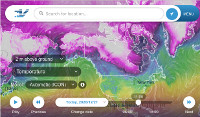Why this blog?
Until this moment I have been forced to listen while media and politicians alike have told me "what Canadians think". In all that time they never once asked.
This is just the voice of an ordinary Canadian yelling back at the radio -
"You don't speak for me."
email Kate
Goes to a private
mailserver in Europe.
I can't answer or use every tip, but all are appreciated!


Katewerk Art
Support SDA
Paypal:
Etransfers:
katewerk(at)sasktel.net
Not a registered charity.
I cannot issue tax receipts
Favourites/Resources
Instapundit
The Federalist
Powerline Blog
Babylon Bee
American Thinker
Legal Insurrection
Mark Steyn
American Greatness
Google Newspaper Archive
Pipeline Online
David Thompson
Podcasts
Steve Bannon's War Room
Scott Adams
Dark Horse
Michael Malice
Timcast
@Social
@Andy Ngo
@Cernovich
@Jack Posobeic
@IanMilesCheong
@AlinaChan
@YuriDeigin
@GlenGreenwald
@MattTaibbi
Support Our Advertisers

Sweetwater

Polar Bear Evolution

Email the Author

Pilgrim's Progress

How Not To Become A Millenial

Trump The Establishment
Wind Rain Temp

Seismic Map

What They Say About SDA
"Smalldeadanimals doesn't speak for the people of Saskatchewan" - Former Sask Premier Lorne Calvert
"I got so much traffic after your post my web host asked me to buy a larger traffic allowance." - Dr.Ross McKitrick
Holy hell, woman. When you send someone traffic, you send someone TRAFFIC.My hosting provider thought I was being DDoSed. - Sean McCormick
"The New York Times link to me yesterday [...] generated one-fifth of the traffic I normally get from a link from Small Dead Animals." - Kathy Shaidle
"You may be a nasty right winger, but you're not nasty all the time!" - Warren Kinsella
"Go back to collecting your welfare livelihood. - "Michael E. Zilkowsky
Heh ….
How much power it generated the night before the the first of the twenty and how much it generated the night after.
Must be some kind of ‘expert’ behind this mystery.
Obviously Sask Energy needs to consult the Greeks.
I remember an article from a few years ago,where the government subsidies for “Solar Energy” were so lucrative that Solar Panels did indeed generate power at night..
With the assistance of diesel generators and stadium lights..
Perverse Incentives,they work everytime.
There was a Spanish facility who got caught because someone forgot to turn the generator off once the sun went down…
One of the sillier things about wind and solar is that while solar dies totally at night, the wind also diminishes. How often do you remember the night being really windy? It has to be during stormy weather, or when strong cold fronts are moving though and the barometer is changing rapidly.
The upper winds–in the atmosphere over one or two thousand feet off the surface–are usually moving. Daytime heating of the ground by the sun causes thermal activity of the air, vertical currents as the ground heats the air near it, and these currents tend to start connecting the air nearer the surface with the air moving at altitude, and the wind picks up in the morning a few hours after sunrise. At night, the ground cools down, the thermal activity disappears, the air near the surface gets heavier and stops moving. No wind. Nocturnal inversion, it’s called.
Now, those wind turbines reach a long way up, sometimes 500 feet or more, and so they will catch winds sooner in the morning and later in the evening, but if the nocturnal inversion is acting normally and its boundary rises high enough, they won’t get much wind throughout most of the night. Maybe none at all.
That nocturnal inversion is sometimes sharply defined, and if the upper winds are strong enough, we get turbulence from wind shear at the inversion boundary. An airplane approaching to land passing through that can get some bumping around as the airspeed shifts.
Every Single Data Center is a threat to home energy security.
On June 25, nearly one of the longest sunlight days of the year, where you have daylight from 4:45 am to 9:30 pm, the generation was 14 MW average with capacity at 30 MW. That is 16 hours and 15 minutes of sunlight. The generation could have been 20 MW average with that much light. So the real capacity is 30% less than the name plate rating of the panels. Something to keep in mind when the next solar farm is built in your neighbourhood.
And that’s because those panels are rated for sun directly overhead of a totally clear day, at high noon. Here in Canada, we NEVER have the sun directly overhead even at high noon, because we are well north of the Tropic of Cancer, the latitude where the sun is overhead on the longest day of the year. That’s at a latitude of about 23.5°N, and we start at 49° at the US border, unless you’re in southern Ontario where you might be a few degrees more south.
So at the latitude of these panels, the sun has more atmosphere to pass through, weakening it as the angle between latitude of the panels and the latitude of the tropic is significant.
And anytime before or after noon there more angle, from east and west, weakening the sunlight.
Dust or smoke or any cloud at all also cut the light.
Where is the accountability for this? Tax dollars should not be wasted frivolously on low to negative return ventures. And when it is wasted like this, people in government involved should lose their jobs.